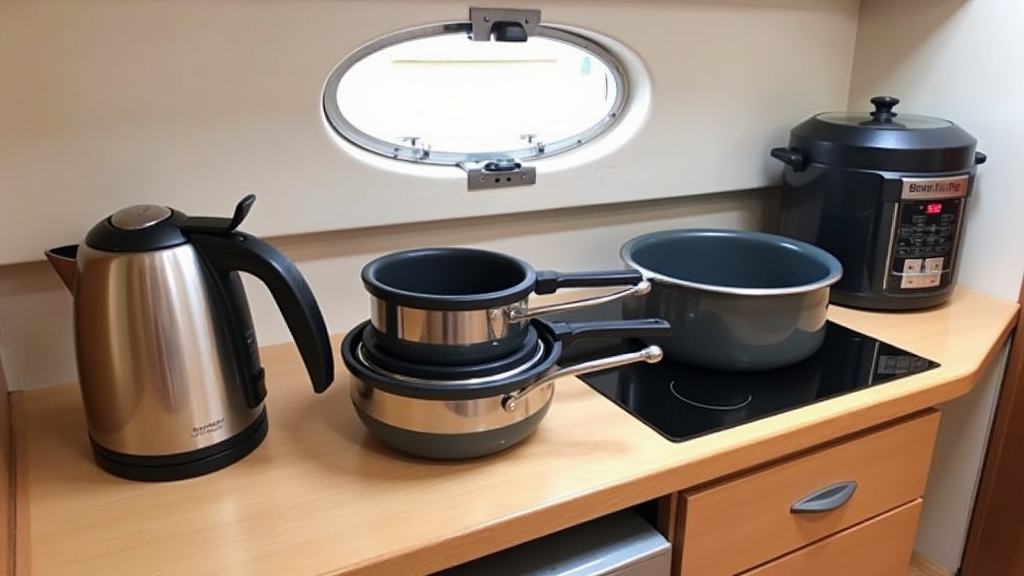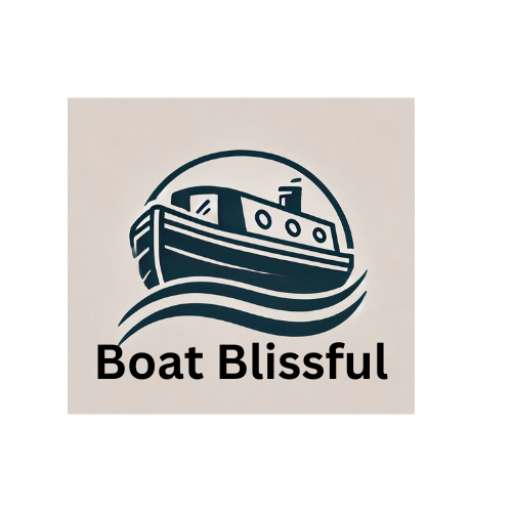Essential Cookware For Narrowboat Kitchens
If you’ve spent any time cooking on a narrowboat, it’s easy to realize that regular kitchen gear just doesn’t cut it. Space is tight, counters are tiny, and storage is a constant game of Tetris. Getting creative with the right cookware makes prepping and enjoying meals on board so much smoother. After years of floating about and fiddling with different gadgets, I’ve put together a list of equipment and tips that really come in handy on a narrowboat kitchen.

Why Choosing the Right Cookware Matters on a Narrowboat
Cooking on a narrowboat isn’t just about making a meal. It’s about making the most out of every little bit of counter and storage space. You’ve probably noticed how quickly clutter can take over, and bulky or single-use pans usually end up gathering dust or taking valuable room needed for basic supplies. Picking cookware that’s versatile, compact, and easy to store turns tiny kitchens into much more productive, less stressful spaces.
Unlike standard kitchens, narrowboat galleys have stoves that often run on gas or solid fuel, sometimes with just two burners. Cupboards are shallow, and you don’t get unlimited water to clean up after. These factors push you toward gear that handles multiple jobs and is easy to wash. I’ve watched so many first-time boaters pack an entire drawer of frying pans, then use just one small nonstick for everything. Quality really beats quantity here.
Top Cookware Picks for Spacesaving Narrowboat Kitchens
Finding the right tools took some trial and error, but with time, certain pieces turn into real workhorses. Here are the favorites I keep within arm’s reach on the boat.
- Nesting Saucepan & Frying Pan Sets: A good nesting set stacks up neatly, letting you store a full range of sizes in just one cupboard. Most come with detachable handles, so they fit in the smallest spaces. I use them for boiling pasta, making breakfast, and even baking in the oven by removing the handle. Nonstick options are easier to clean with less water, which is a big plus on board.
- Pressure Cooker: These are not only compact but also super useful for fast meals that save on gas. You can make soups, rice, stews, and even puddings in half the usual time, which is great if you’re managing both fuel and water.
- Collapsible Colander: Not everyone thinks about this one, but a silicone, collapsible colander folds flat in a drawer and is light for draining pasta or rinsing veggies. It’s a tiny upgrade that saves loads of space.
- 11in1 Ninja MultiCooker: This bit of kit is a real game changer for a narrowboat kitchen. The Ninja does pressure cooking, slow cooking, air frying, baking, roasting, and more, all in one appliance. I use it to whip up roast dinners, quick curries, or even bread. It cuts down on the need for multiple pots and pans, which is a real bonus when space is at a premium. Plus, it uses less power than a regular oven, which saves both battery and fuel.
- Small Stovetop Kettle: Most narrowboats don’t have electric kettles unless they’re hooked up to shoreline power. A simple stovetop model, preferably with a folddown handle, boils water for tea, coffee, or instant noodles, and stores nicely away.
- Cast Iron Skillet (8” or 10”): I find a single cast iron pan replaces several pieces of kit. You can fry, bake, and sauté in these, and they transition from stovetop to oven easily. They’re also practically indestructible with a bit of care.
Narrowboat Kitchen Essentials: How to Maximize Every Inch
Staying organized in such a tight space is almost as important as picking the right gadgets. I’ve learned a few tips to help make any galley workable, no matter how small.
- Magnetic Strips and Hooks: I stick these to the sides of cupboards to hold knives, utensils, and light pots. It frees up drawer space for bulkier items or food storage.
- Foldable Chopping Boards: These pack away flat and often double as a tray. I keep two in different sizes. They slip under the sink or fit upright between pans.
- Stackable Mixing Bowls: Bowls that nest together or collapse into themselves tackle prep work, serving, and storage all at once. Ones with lids double as leftovers containers.
- Multipurpose Utensils: Swap out separate serving spoons, spatulas, and whisks with tools that handle several jobs. For example, a spork or a slotted spoon/spatula combo matures into a favorite quickly.
Another simple way to save space is to use lids that fit multiple pans or pots. When you buy new cookware, check if you can get universal lids, so you’re not wasting storage space with lots of illfitting covers. Also, small baskets or dividers in cupboards keep everything from sliding around while the boat’s moving. Hooks can go on the ceiling or cupboard sides, holding mugs, measuring spoons, or small bags of coffee. These little changes add up to a kitchen that works better on the water.
Quick Tips for Cooking on a Narrowboat
Culinary life on a boat throws up challenges you don’t get in a fixed kitchen. Steam and grease build up faster, so opening a hatch or switching on a vent is always worth it. Cooking in batches saves time and fuel, so I often double up soups or chili and freeze half for a rainy day.
I focus on meals that need just one or two pans, like stirfries or pasta bakes, and plan dinners around what storage space is available. The Ninja MultiCooker mentioned earlier handles entire meals from a roast chicken right through to baked potatoes, which is pretty handy on cold nights. Cleanup is faster if you avoid recipes with lots of fiddly parts. Simple is best when water is limited.
One of the biggest favors you can do for yourself is to prep ingredients in advance and store them in stackable containers. That way, you can quickly whip up meals and avoid making a mess every time you cook. Wipe everything down after every meal to prevent clutter and keep things tidy for the next cooking session.
Big Considerations Before Selecting Narrowboat Kitchen Gear
If you’re new to boat life or planning out a kitchen refit, a few crucial points help you avoid expensive mistakes. First up, avoid nonboatspecific gadgets unless you’re sure they fit your space and power setup. Appliances that work fine in a home kitchen often struggle with boat power, especially if you cruise offgrid regularly.
- Energy Use: Doublecheck the power requirements for any electric gadgets. If you’re not plugged in at a marina, lowwattage devices or those that run on gas are way less hassle. The 11in1 Ninja is popular because it runs well off a good inverter and uses way less energy than running a fullsized oven or hob for ages.
- Material and Durability: Lightweight pans can be tempting, but they dent and warp easily when stashed away or moved in a rocking boat. Stainless steel or cast iron last longer and are easier to clean, too.
- Ease of Cleaning: Water supply is sometimes short. Nonstick, easyrinse surfaces, and collapsible items all cut down on effort and water use.
- Storage Space: Before buying, check cupboard depth and height. Measure twice. Returns are a pain when you’re out on the cut.
Pressure Cooking
Having an oldschool pressure cooker or a modern one like the Ninja opens up tons of meal options. Hotpots, stews, and risottos come together quickly, and it’s great for those nights when you want real food but not a huge mess. Since pressure cookers build up heat and steam, they’re good for warming up the whole boat as a side bonus.
Durable, Multifunctional Tools
You won’t want delicate handles or breakable bits. Every piece should feel solid enough to take a knock and stand up to daily use. Choose tools that work for prep, cooking, and serving to cut down on clutter. Stainless steel tongs, silicone spatulas, and a good sharp chef’s knife have all stood the test of time in my galley. Selecting these tough but multipurpose tools means you’re set up for many types of meals, whether you fancy a simple fryup breakfast or a slowcooked stew.
Favorite RealWorld Narrowboat Meals With Minimal Gear
This kind of kitchen setup isn’t just about saving space. It actually shapes the meals you end up making. Some of the most satisfying boat dinners aren’t complicated. I often go for onepot chicken casserole, baked potatoes in the Ninja, classic fryups, or Mediterranean veg with couscous. Fresh bread is easy with the multicooker, and a stovetop kettle means there’s always a cuppa or soup on hand when the rain lashes down.
- Breakfast Hash: Cook potatoes, onions, and eggs in the cast iron skillet, all on one burner.
- Quick Chilli: Brown mince, chuck in beans, spices, and tomatoes in the pressure cooker. Done in half an hour, feeds you for days.
- Chicken Tray Bake: Toss chicken, veggies, and seasoning in a shallow pan; bake in the Ninja or oven. Easy to prep, big on comfort food.
- Homemade Bread: Use the proof and bake settings on a Ninja for crusty bread without needing a dedicated bread maker.
For variety, you can try onepan pasta bakes—just toss in pasta, veggies, sauce, and cheese into a suitable pot or pressure cooker, and let it come together. Curries and hearty soups are also regular favorites, filling and quick to pull together without much hassle or extra gear. The key is to get creative with what you’ve got and keep meal plans flexible depending on available supplies and the weather outside. Sometimes a warming soup or stew is perfect, especially when it’s chilly and damp on the canal.
Frequently Asked Questions
What’s the best way to keep narrowboat cookware organized?
Answer: Go for stackable or nesting sets, and use wallmounted racks or magnetic strips to keep things off the counters. Labeled tubs in cupboards keep utensils and small gadgets easy to find.
Is it safe to use multicookers like the Ninja on a boat?
Answer: Most modern multicookers are safe on narrowboats, as long as you stick within your inverter’s power rating and allow for ventilation. The Ninja’s popularity is partly down to its low power draw and versatility.
Are electric kettles worth it on a narrowboat?
Answer: If you’re on a marina hookup, they’re convenient. Otherwise, a stovetop kettle saves battery and handles just as many tasks.
Final Thoughts on Compact Cookware for Narrowboats
Cooking on a narrowboat takes some adjustment, but having the right multitasking, compact gear makes it not just possible, but genuinely enjoyable. Focusing on a few wellchosen pieces, like nesting pans and the 11in1 Ninja, frees up both space and time, so you can spend more hours enjoying the scenery and less time struggling at the stove. With a bit of planning and an eye for quality equipment, your narrowboat kitchen can be as fun and functional as any land based setup.
